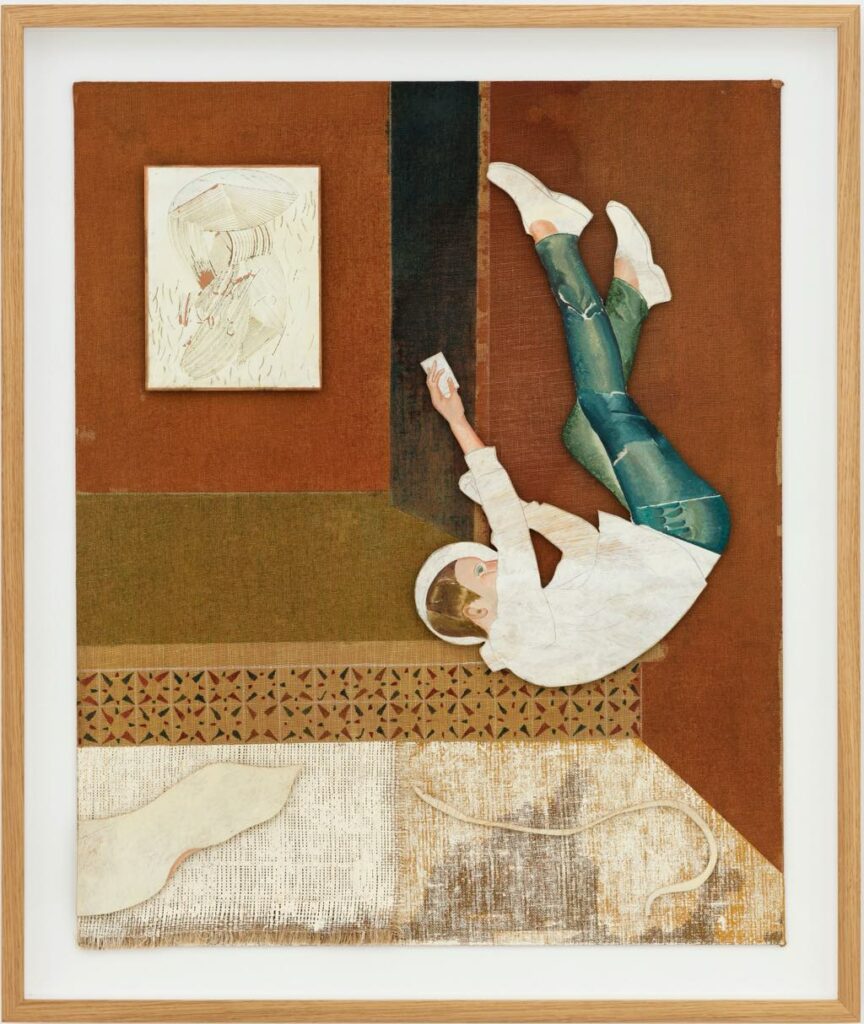
One of Paris’s leading contemporary art galleries, Perrotin, in the Marais, is currently holding two exhibitions of interest.
The first, “Inner Songes,” features the work of Jens Fänge, a Swedish artist I was unfamiliar with but was more than happy to discover. The subject matter of his collage-paintings in pale colors seems to come straight out of a dream while referencing the recent history of Western art: a touch of Surrealism, of course (dreams), but also the German Expressionists. Many of the androgynous faces resemble characters straight out of the 1930s Berlin of Cabaret with their slicked-back hair and arch expressions.
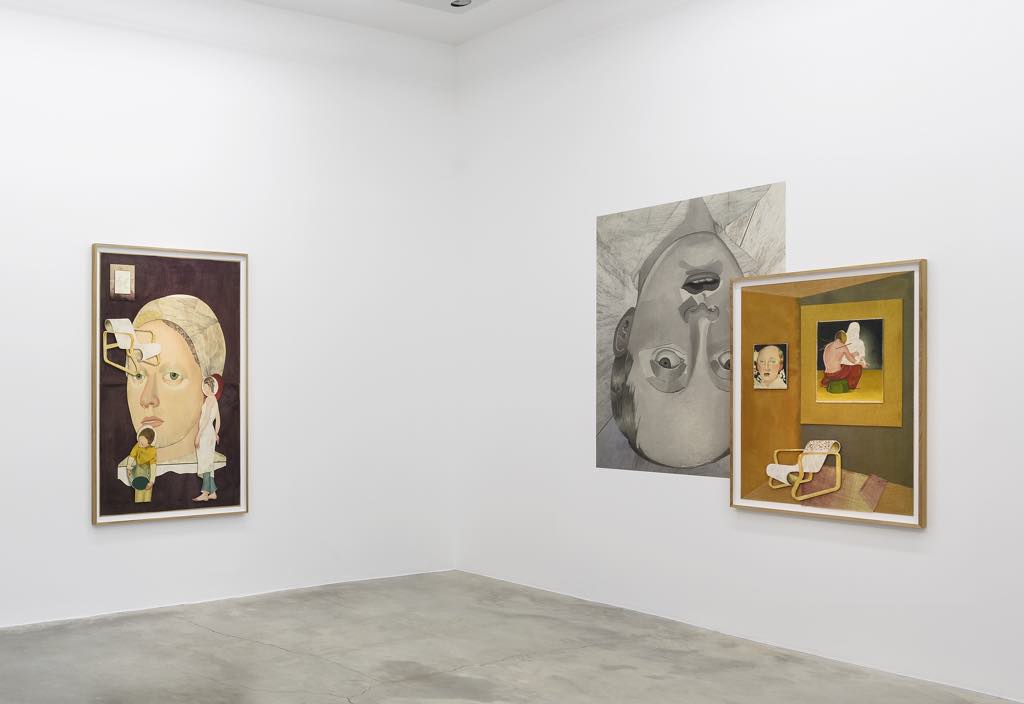
The other fascinating thing about these meticulously made three-dimensional paintings is the way they are constructed. The multilayered works incorporate cutouts and a variety of materials, including wood, copper, cardboard, vinyl and fabric, often painted with anomalous patterns. Miniature reworked photographs of his own works sometimes become part of a composition, and occasionally one painting is attached to another.
Like the German artist Georg Baselitz, Fänge often turns the humans in his paintings upside down. Sometimes they are falling or simply floating in space, as in “The Pensive Air” or “Sugarlift.” The setting is almost always architectural, with stairways a recurring feature.
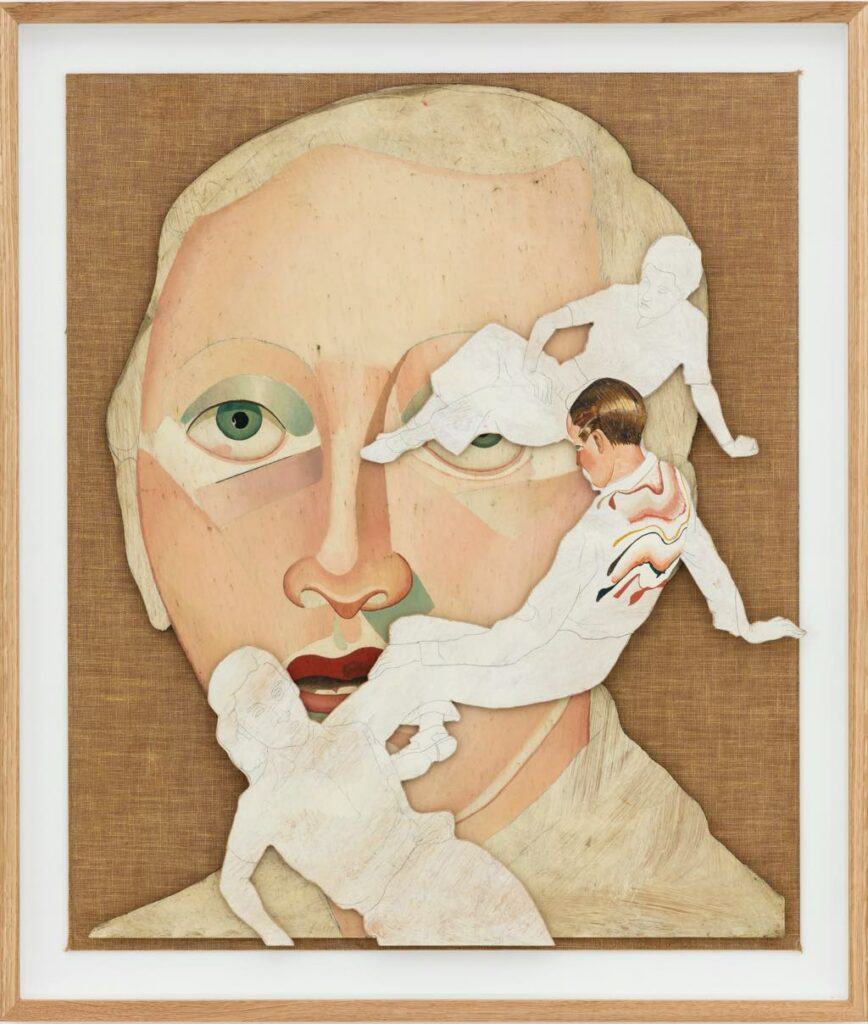
It is the details that pull you in to these works: a tiny framed painting of a mysterious doorway at the end of a long hallway (or stairway?) covering one eye of a blond woman, who has an upside-down image of another woman attached to her chin in “Grande Tête (Mogensen),” or the recurring image of a cat with a colorful patterned coat licking its back leg. For this exhibition, Fänge has even decorated the floor of the space to create an installation.
The dreamworld, gender-fluid ambiance of Fänge’s show continues in Perrotin’s second exhibition, a group show called “Les Yeux Clos” (“Eyes Closed”), with works by Mathilde Denize, Alex Foxton, Elizabeth Glaessner, Simon Martin and Paolo Salvador, young(ish) artists who took inspiration for these works from Federico Fellini’s marvelous Book of Dreams, in which the Italian filmmaker, following Jung, not only wrote down his dreams but also illustrated them.
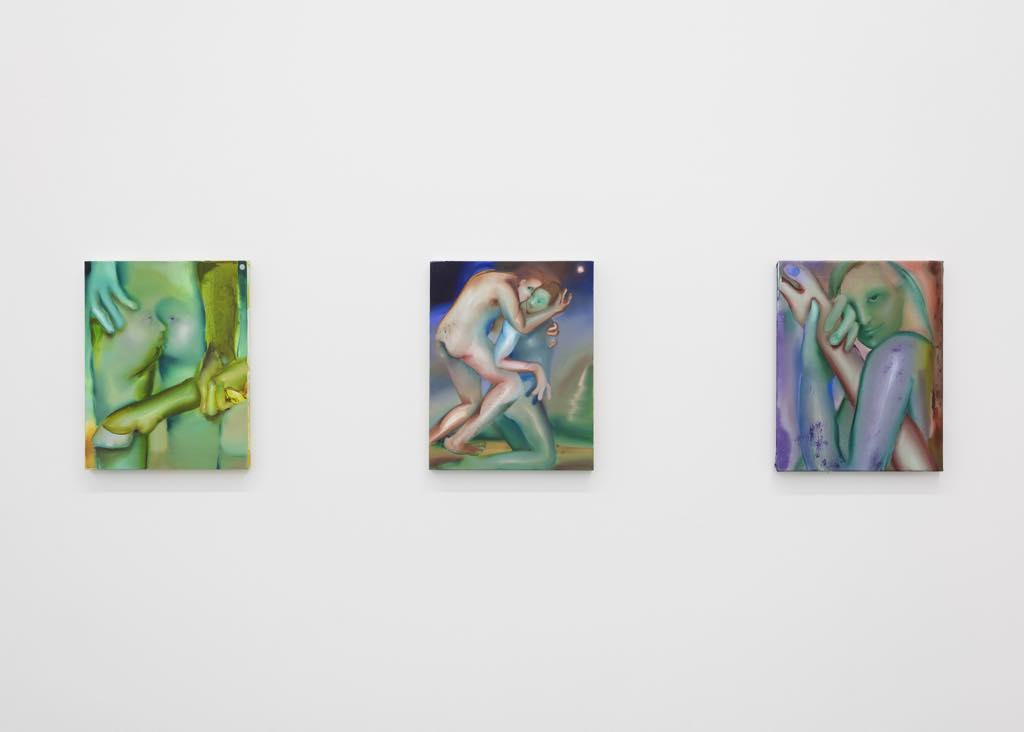
Once again, we enter the far reaches of artists’ inner worlds. Most striking, perhaps, are Glaessner’s mythological visions featuring the naked intertwined bodies of strange part-animal, part-human creatures painted in disturbingly sickly acidic colors.
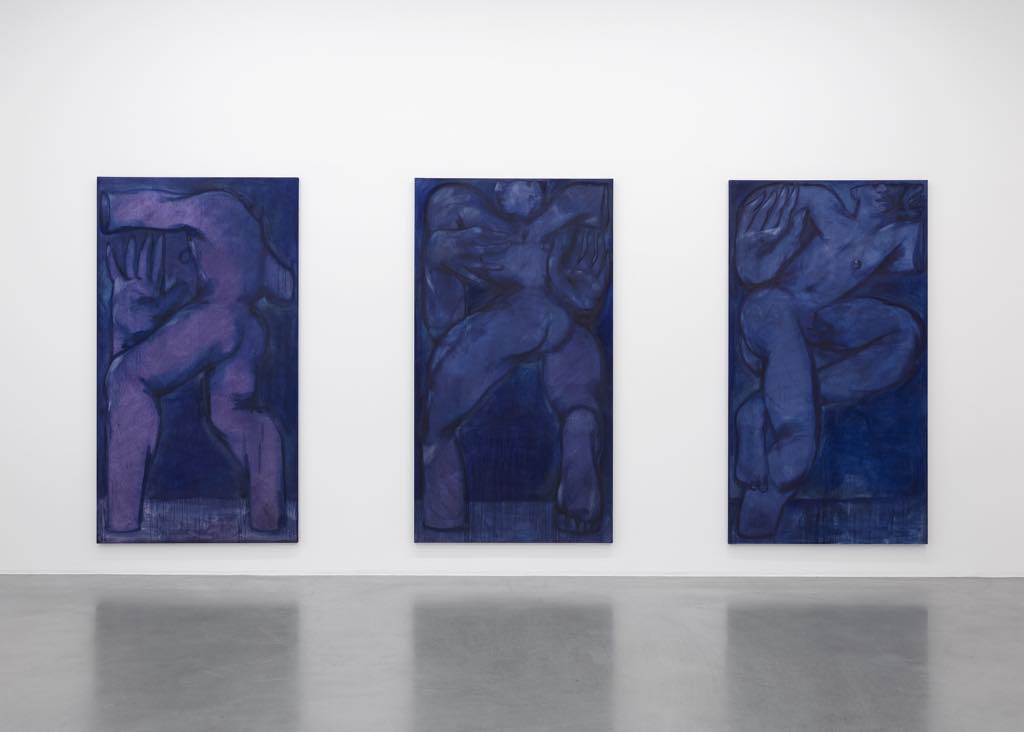
Foxton’s large-format paintings, all titled “Weird Sister” and painted in shades of blue, depict massive figures that fill the entire canvas. The heads and feet are cut off at the edge of the painting, and the hands are disproportionately huge. The figures seem to be trying desperately to escape from the canvas.
These two shows are guaranteed to offer you a temporary escape into other realms, where you will forget about Covid-19, curfews and lockdowns for a time. There is no guarantee, however, that the images you see will not invade your own dreams.
Favorite
